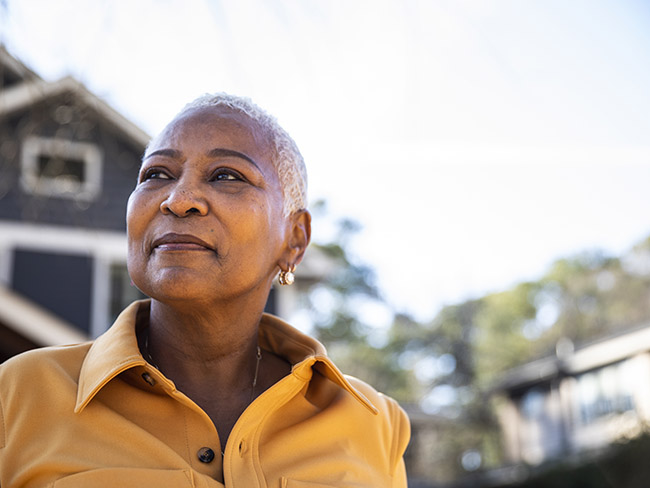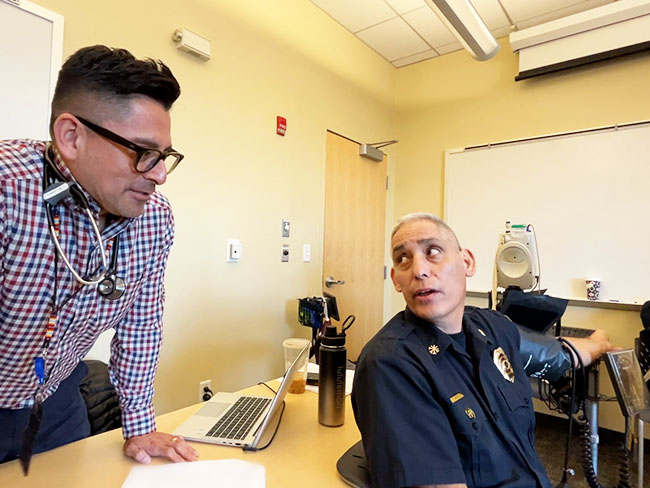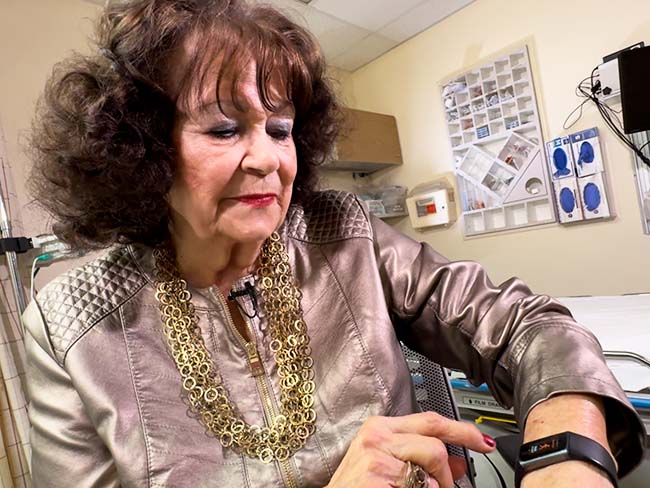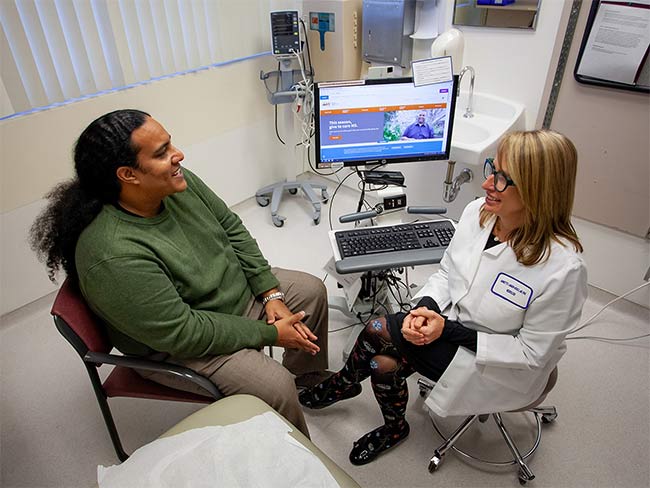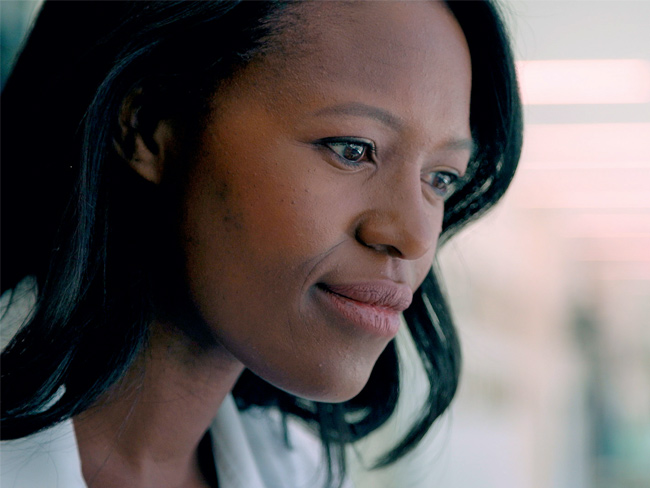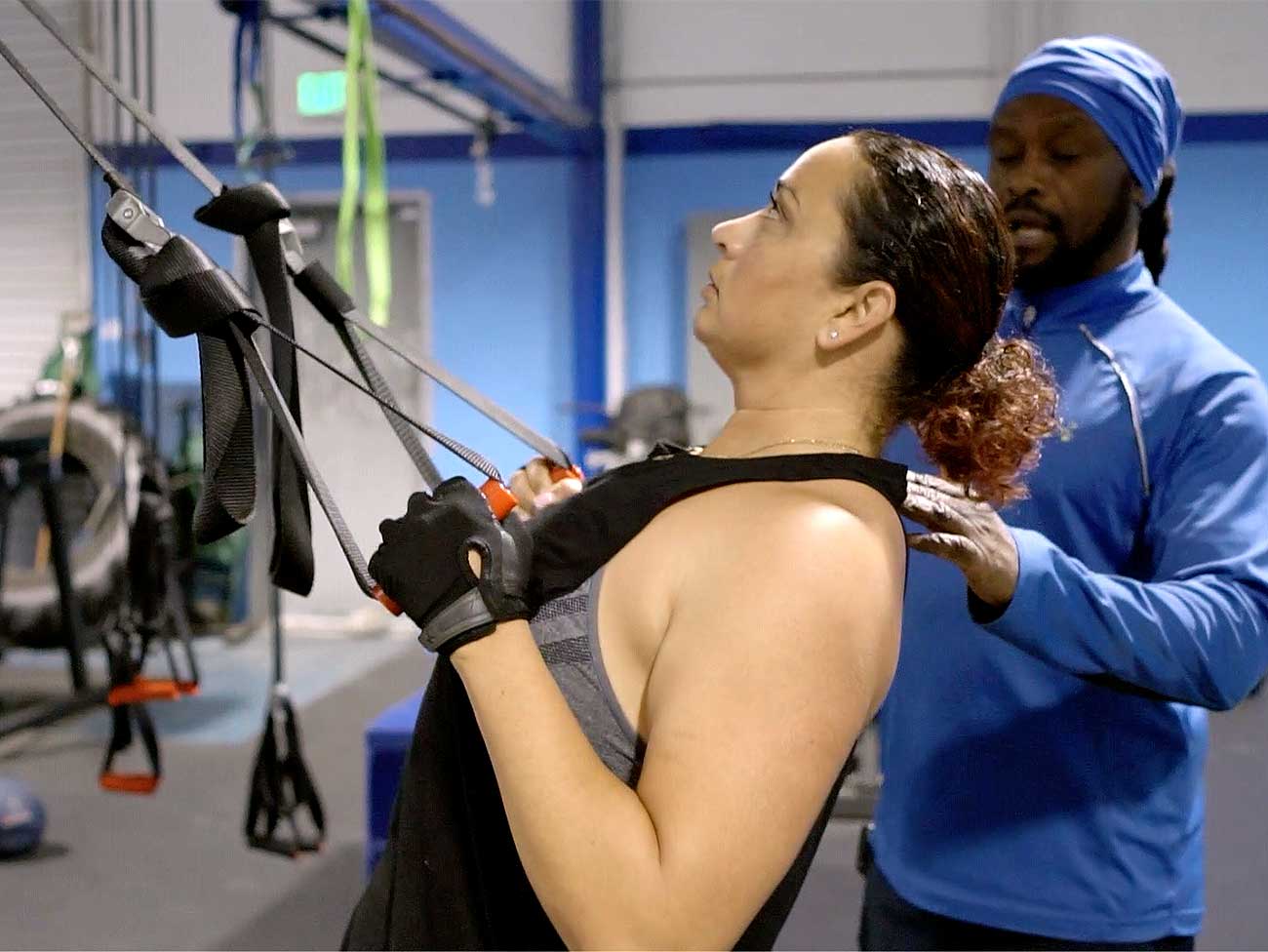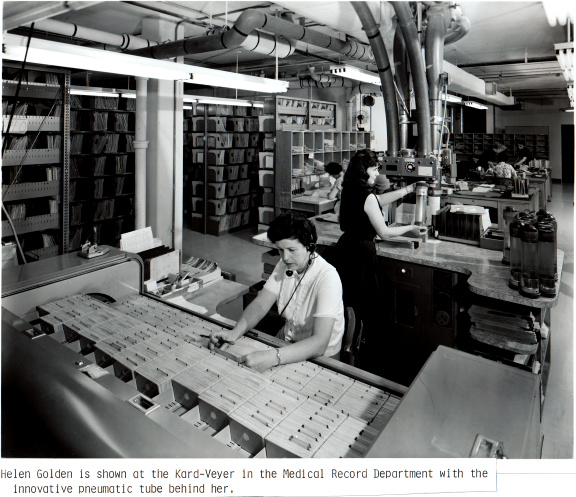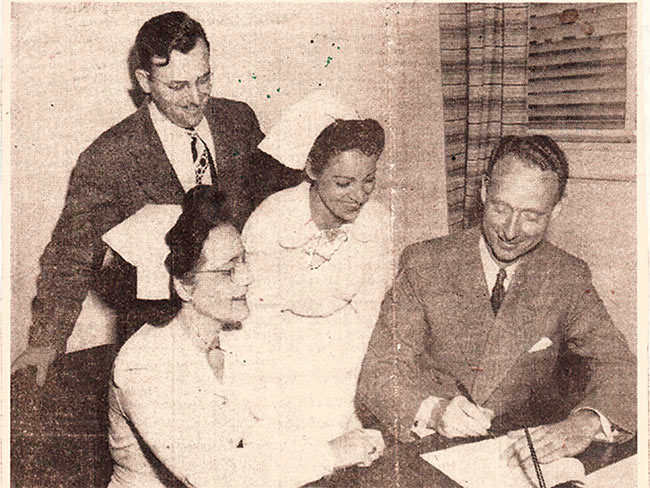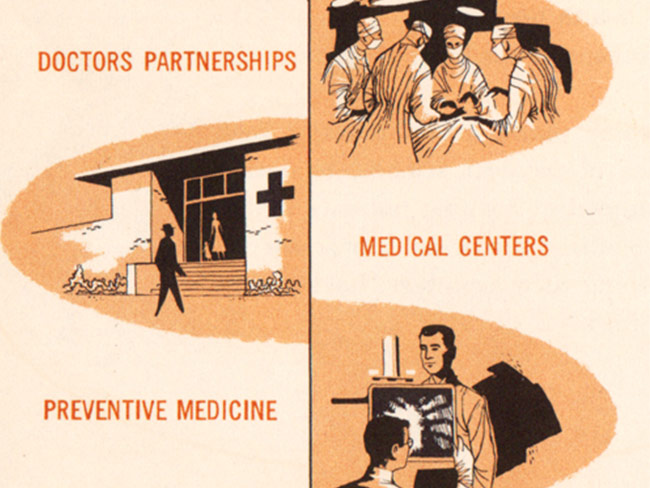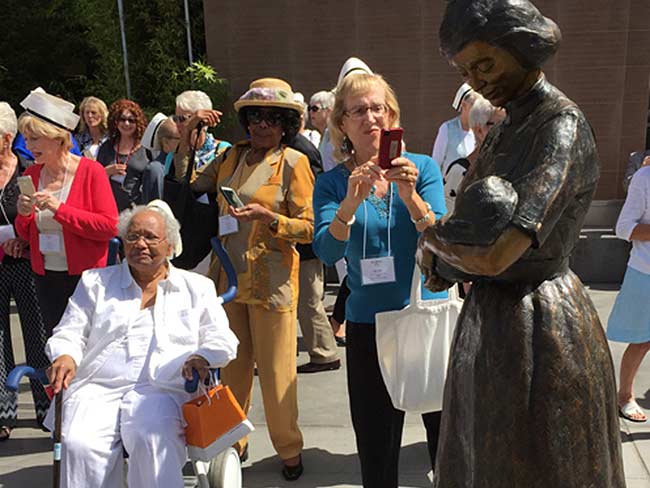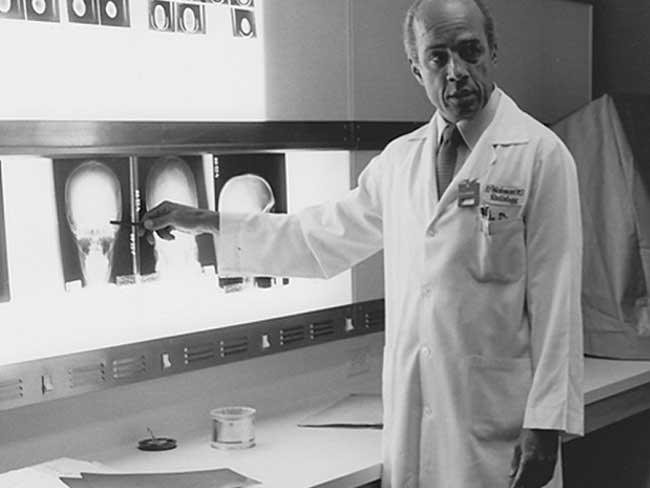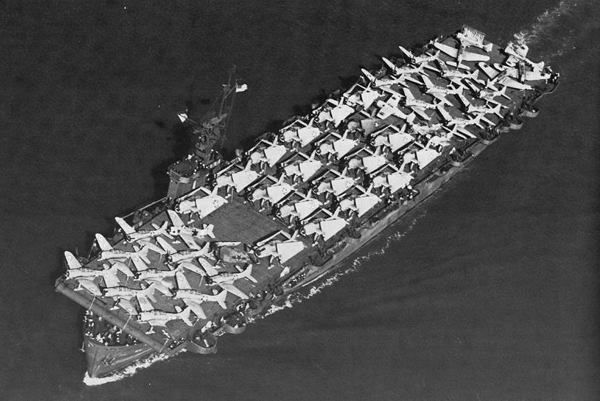Thriving with 1960s-launched KFOG radio
Kaiser Broadcasting radio connected listeners, while TV stations brought together viewers.
Disc Jockey Pete Taylor in KFOG studio, 1966. Kaiser Permanente Heritage Archives photo.
Just a few years ago, radio listeners in the San Francisco Bay Area could tune into KFOG-FM every Friday evening beginning at 6 for Kaiser Permanente-sponsored Thrive Time, a commercial-free hour intended “to take the stress out of your Friday commute.” They could also enjoy “Acoustic Sunrise” on Sunday mornings for more Thriving goodness.
Thrive Time seemed like a great new pop culture connection for Kaiser Permanente; in fact, the Health Plan’s link with KFOG (104.5) was first forged a half-century ago.
Although Henry J. Kaiser’s longest-lasting legacy is Kaiser Permanente, he was at the helm of a giant complex of industries from the late 1930s until his death in 1967. That empire included the Kaiser Broadcasting Corporation, which developed a string of radio and TV stations starting in 1957 with KHVH-TV 13 and KHVH AM 1040 in Honolulu.
The Hawaii stations were built from scratch at Henry J. Kaiser’s Hawaiian Village Hotel, thus the “HVH” in the call signs. The next year Kaiser Broadcasting dropped KHVH-TV to buy KULA-TV 4, which was an ABC affiliate and included extended island service through Maui’s KMVI-TV, channel 12.
Kaiser begins in San Francisco Bay Area in 1963
Kaiser’s media ownership in the San Francisco Bay Area, Kaiser Permanente’s initial home base, began when the broadcasting corporation acquired the former KBAY radio station and renamed it KFOG.
On March 1, 1963, with its foghorn blaring, KFOG hit the airwaves with a soothing format consisting of soft middle-of-the-road music during the day and periods of block programming at night aimed at particular audiences.
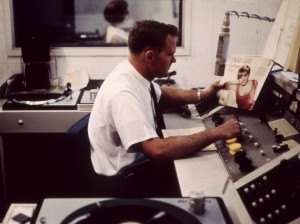
Pete Taylor, KFOG-FM, head disc jockey in the 1960s. Kaiser Permanente Heritage Resources Archives photo.
Dick Block was Kaiser Broadcasting’s vice president and general manager, and Pete Taylor was the head disc jockey. Taylor left for Boston in 1966 to work at Kaiser-owned WJIB-FM radio station, which had a format similar to KFOG’s and WCAS-AM, a “hyper-local” station serving the Boston-area communities of Watertown, Cambridge, Arlington, and Somerville.
In 1975 Kaiser Broadcasting sold KFOG and Boston radio station WJIB to General Electric. The sale of the two stations set a record, estimated at well over $2 million.
UHF approval broadens TV markets
In the early 1960s, Kaiser took advantage of a new wave of television broadcasting.
During the first decade of television, TV sets only received very high-frequency band, or VHF, signals, and the existing airwaves became saturated with stations. The Federal Communications Commission recognized the problem and endorsed legislation to broaden TV broadcasting to include ultra-high frequency band, or UHF, signals.
“We have concluded that the public interest clearly requires expanded use of the 70 UHF channels for television broadcasting; receiver incompatibility is a major factor inhibiting such expanded use,” the FCC stated in a letter to the House of Representatives. “. . . we have earnestly recommended enactment of this legislation as being of utmost importance to the national welfare.” 1
In 1962, Congress passed House Bill 8031, the All-Channel Receiver Act, which required television manufacturers to equip new sets to receive UHF channels. UHF was a breakthrough in expanding television access.
An internal Kaiser Broadcasting film from 1968 explained the challenge — and opportunity — this way:
“In 1962 only 15 American cities have more than 3 TV stations . . . At Kaiser world headquarters the passage of the All-Channel Bill set a plan into motion that (will) result in one of the largest programs for the construction and operation of new TV stations in the history of the industry.”
Kaiser Broadcasting expands reach across the nation
Under Dick Block, Kaiser Broadcasting’s first mainland television foray involved licenses for the newly-opened UHF market. The corporation started two UHF stations in 1965 — WKBD-TV in Detroit and WKBS-TV in Philadelphia.
In the next three years, Kaiser’s corporation added television stations in Los Angeles, KBSC, and Cleveland, WKBF, and radio and television stations in Boston, WKBG, and San Francisco, KBHK, channel 44, which originally carried the KHJK moniker that reflected Henry Kaiser’s initials.2
Chicago came into the fold in 1974 when Field Communications partnered with Kaiser to create WFLD-TV. In most markets, Kaiser Broadcasting was among the first to start an independent station; the Bay Area was the exception. By this time the corporation’s holdings included seven TV stations — San Francisco, Los Angeles, Boston, Detroit, Cleveland, Philadelphia, and Chicago.
When Kaiser Industries split up in 1977, all the media holdings were liquidated as part of what was described as “the largest voluntary corporate dismantling in U.S. history.” 3
The Kaiser Broadcasting Corporation no longer exists, but the Kaiser Permanente-KFOG connection restored a link established 50 years ago.
Special thanks to KFOG/KBC originals Dick Block and Pete Taylor for their assistance in this story.
Postscript — history never sleeps
This article sparked additional research by Permanente physician and history buff Ted Eytan, MD who noted that the KBC San Francisco studio at 420 Taylor Street later became the home of Practice Fusion, manufacturer of the namesake electronic health record system. The site is currently the headquarters of the internet community bulletin board Reddit. It’s also the site of a beautiful 1940s mural about broadcasting.
1. Letter March 16, 1962, from the FCC to the House of Representatives Committee on Interstate and Foreign Commerce.
2. Channel 44 television used the call letters KBHK-TV from its inception in 1968 until 2006. It is now KBCW, digital channel 45 (virtual channel 44)
3. Kaiser’s Fledglings Prepare to Fly,” Los Angeles Times, March 20, 1977.







